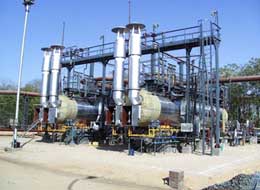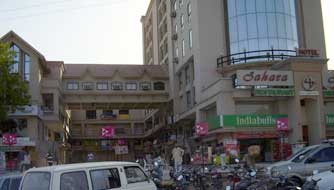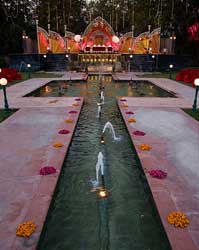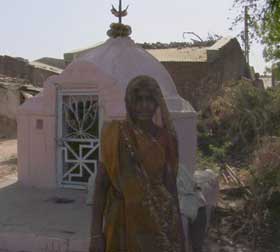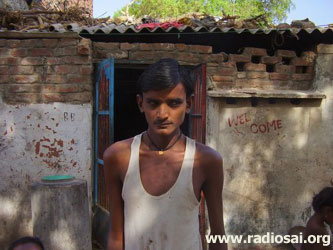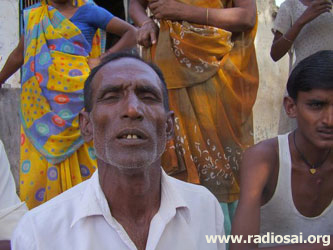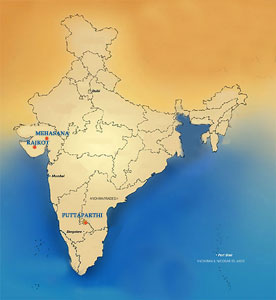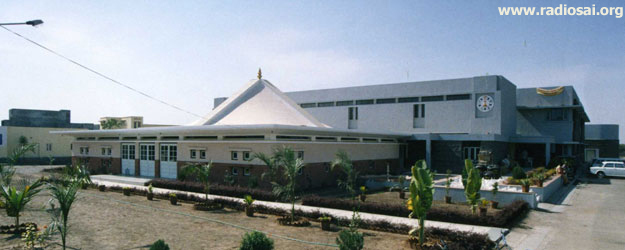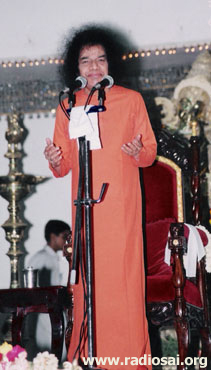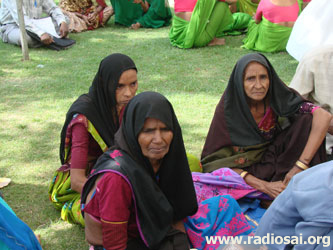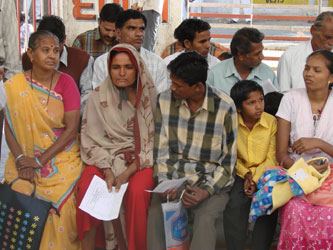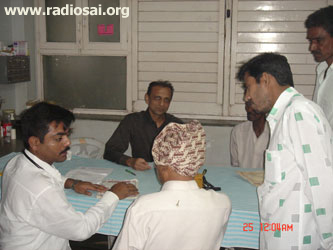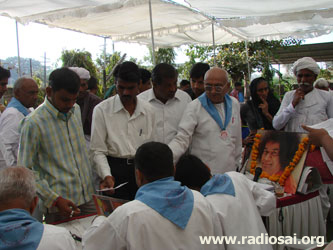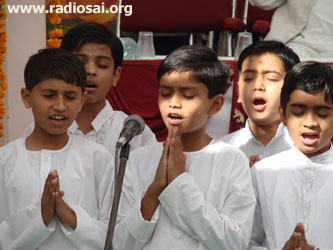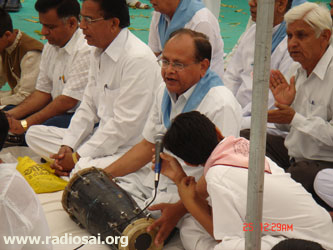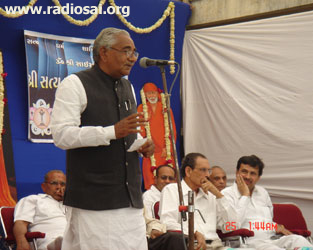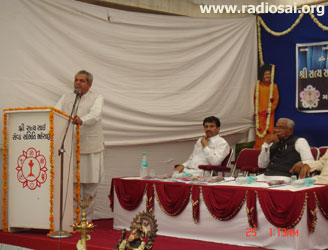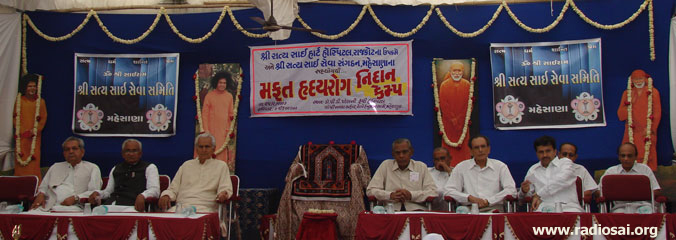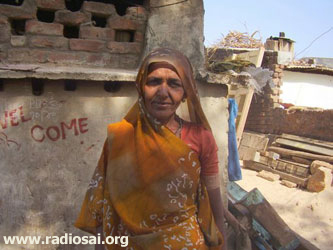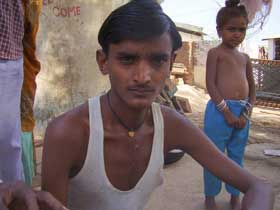 |
 |
 |
Volume
5 - Issue 06
JUNE 2007 |
|
A MOTHER'S AGONY The dollar daze can’t be more apparent than in the dazzle of the burgeoning city of Mehasana, in the state of Gujarat in western India. Among its many claims to fame, Mehasana is well-known for its “foreign content”. It is believed that one or more members of every family here have ventured abroad in pursuit of economic prosperity. A substantial segment of the highly successful Gujarati community settled in the United States of America traces its roots to the Mehasana region. The lure of the American greenback is so strong that it is believed that people of this region do not shy away from paying huge amounts in dollars to go the USA.
The area also enjoys substantial in-house economic growth and activity. Some indicators of this prosperity are the large presence of the ONGC (Oil & Natural Gas Corporation Limited). Natural resources are aplenty in the region. Mehasana enjoys a rich crop of peanuts, mustard, psyllium (isabgol) and other agricultural produce.
The co-existence of two hemispheres, divorced from each other like day and night are the two opposing zones that have two totally contrasting realities. While the financial boom is rapidly adding wealth to the coffers of the rich, this prosperous but caste-conscious city also has a huge segment of a poor and illiterate population that remains untouched by this prosperity. They are barely surviving on the periphery of its economic epicenter: marginalized men, women and children who are yet to enjoy any of the fundamental rights guaranteed to them in the Indian constitution, let alone ride the wave of Mehasana’s recent tide in fortunes. Children of a Lesser God This is the story of one such child of a lesser God and his mother, a single parent, who wept, wailed and besieged a higher power out there, to help her out of her desperation when she faced a parent’s worst nightmare – to helplessly watch her child die a slow death before her eyes. She felt totally powerless, unable to reverse this tragedy only because she was poor and lacked a social support and health-care system. It is a story of how those who support and sustain the giddying economic boom at the grass-roots level are so not valued and manage to slip and fall through the cracks in the system which offers no safety net to them. This is a tale of a victim of the utter despair and callousness that a society’s capitalist conscience could not care less about.
The local Member of the Legislative Assembly, neighbours, and relatives chipped in then and paid for the surgery that was performed in a local private hospital. Subsequently, his condition deteriorated further and this time around an operation for his heart became imperative for his survival.
Her only child was dying a slow death each day and she could do nothing to help him. Pittiben was inconsolable. Her last resort was to beseech God her moments of frustration, she even fought with the Goddess, the presiding diety of the Chamar community. She was frequently found at the small temple near her house praying to the Goddess for the life of her precious and only child. She would weep and wail in front of the Goddess. The Chamar Vas (Chamar colony) in Nugar village echoed with the cries of this helpless mother who had no one to turn to except the Divine mother. Meanwhile, Bhavesh’s uncle Ambalal continued to meet with and seek help from various government officials in the hope of getting some money or medical subsidy that would solve his nephew’s problem. However, no help materialized. With each passing day, the family’s hopes for Bhavesh’s medical treatment and survival were ending on a sliding scale.
Seek And Seize The Opportunity To Help:Baba The idea of conducting prescreening medical camps in the remotest and economically disadvantaged areas of the state and to actively seek out patients suffering without any hope or access to a healthcare system is the brainchild of Bhagavan Baba. At the time of the hospital’s founding, Bhagavan had advised His devotees in Gujarat to take relief to those who are the most in need of it. Bhagavan had categorically directed and guided them to seek out those who are caught in the viscous cycle of abject poverty, helplessness and hopelessness. “Do not wait for an opportunity to serve: go out and seize the opportunity which is already available,” Baba had said. In direct adherence to this command from the source of ultimate compassion, the Sri Sathya Sai Hospital, Rajkot, has been, since its founding in the year 2000, conducting regular diagnostic cardiac camps in different districts of Gujarat, going to great lengths to specifically target the most backward and neglected areas. These camps spread awareness among the poor about the free tertiary care facilities available at the Hospital and offer prescreening camps.
Camps Exemplify Compassion and Coordination For those involved in organizing the various aspects of such heart camps, it is a very special opportunity for narayana seva or service to God. In Rajkot , the Sai devotees like to call it a ‘heart narayan seva’. “We are going to the people rather than waiting for them to come to us,” says Manoj Bhimani, Trustee of the SSS Hospital, Rajkot . “The awareness of this world-class health facility has to penetrate to those who feel most neglected and forgotten by governments, NGO’s and the world. Bhagavan’s mission is to uplift the downtrodden and infuse hope, love and health in their lives.” The hospital administrators routinely monitor patient data to determine the patterns in the district-wise access to the hospital. Based on the geographical trends that emerge, the districts that indicate lower patient access to the hospital become the administrators’ top priority. These districts are then aggressively targeted through media campaigns and the local population is informed of upcoming prescreening heart camps. Once the word spreads, villagers from the remotest of areas turn up. Most patients and their families have usually given up all hope and simply resigned to their fate. Once they experience the heart camps, a renewed sense of hope is rekindled in their hearts, often reaffirming their faith in the goodness of society and in God, as they see it as a direct response to their prayers from a higher power.
This mammoth effort is made possible due to the close coordination between the SSS Hospital of Rajkot, the service wing of the local chapter of the Sai organization and the Sri Sathya Sai Organization of the state of Gujarat. The synergies result in a well-oiled living organization that has successfully been translating Bhagavan Baba’s message of love and service into reality for such forlorn souls as Bhavesh Chamar of Nugar village in the municipal jurisdiction of Mehasana. The entire operation is conducted with a clock-wise precision. For starters, a number of pre-registration centers are identified. Publicity about the event is conducted using local newspapers, radio, word of mouth, posters, and pamphlets. Local councils, health authorities and local government authorities are apprised of the camp information so that the maximum number of local people can derive benefit from the effort. Typically, clinics are spread across the districts, with specific emphasis on covering areas that emerge as weaker points of contact from the hospital administrators’ data base. These are manned by the doctors of the SSS Hospital of Rajkot as well as volunteer doctors from other reputed hospitals. Patients are made to fill out a form to provide such information as patient’s name, age, address, contact coordinates etc. Many patients are from economically challenged backgrounds and do not have telephones. Patients are given appointment tokens for consulting cardiac surgeons at the camp.
Heart Camps – Therapeutic For Volunteers and Local Leaders As Well On the day of the camp the location is a beehive of activity with doctors, the ever dedicated seva dal volunteers and administrators trying to do their best. The camp starts in front of Swami’s portrait with the chanting of three Omkars and prayers. The Seva Dal leaders give their final instructions to their respective groups reminding them of spirit in which they must perform their duties. The camp then opens its doors to the long lines of patients.
Patients who have already registered are directly sent to the top-notch surgeons who spare their valuable time to serve at these camps. Seeing the scale and sincerity of the SSS Hospital of Rajkot, there is no dearth of such dedicated medical professionals who volunteer their time, energy and medical know-how and join the SSS Hospital ’s effort to bring healthcare to the remotest corners of Gujarat.
One such guest at a recent camp was Mr. Mangal Patel, the Speaker of the Gujarat Legislative Assembly who visited the heart camp in Mehasana on February 25, 2007. It was the same fateful camp that would offer the very first glimpse of hope to Bhavesh Chamar and his mother Pittiben. Speaking at the camp, a former teacher and now the Speaker of the state legislature, Mr. Mangal Patel said: "What you see before your eyes is not an ordinary event. The kind of activity and the scale at which you are doing the same is not possible without the grace of the Sadguru. It is His energy which allows you to serve in this way." The Member of Parliament from Mehasana Mr. Jayantibhai Barot donated Rs. 25 lakhs (approxiamately US $55, 000) from his MPLAD fund (a corpus fund that Members of the Indian Parliament can utilize and allocate for initiatives directed at the development of their constituency) to the SSS Hospital in Rajkot. So moved was he by what he saw that he confessed if he could help it, he "would donate all the money from the fund if the government permits me." Such is the grace of our Bhagavan that the work done under His banner and supervision motivates, inspires, touches and helps many others, apart from the patients of course. From the volunteers, doctors, medical assistants, lab technicians, visiting dignitaries to the families of the patients, all find the energy in the camp both therapeutic and moving. In the words of the Lord, “Work done with no desire is the supreme ideal of man.” “Serve others, visualising them as kindred atmas” Rajesh Krishnani is a Seva Dal leader who has participated actively in such camps. For him, “The finest reward I get during this camps is to see the face of the patient when they are allotted a date for surgery at the hospital. I see love and hope in their eyes. At this time you feel God is somewhere near us. You get the feeling you really are doing God’s work.” God Listens: Hope and Happiness Descends on the Hapless Mother
Ever since she had lost her husband and her world had turned topsy-turvy with her son’s diagnosis, she had carried the burden of gloom, hopelessness and despair in her heart.
Hargovind Bhavesh’s uncle Ambalal Shankarbhai now says: “The Sathya Sai Hospital is our God”. His neighbor Hargovind concurs: “We could not dream about doing this operation in seven lives”. When Bhagavan Sri Sathya Sai Baba stepped in, all it took was two weeks to permanently restore a child’s health and his mother’s faith in the power of her prayers. If the mother is the child’s first God, Pittiben, a woman of no formal education, epitomizes such Godliness, for in her simplicity lay her trust in God and her sense of surrender to save her son when no government, health care system or social safety net came to her rescue. There are numerous Pittibens and Bhaveshs whose prayers are answered by the SSSH of Rajkot. Over 26 people from Mehsana were operated upon within 20 days of the camp held on February 25. These include patients who required serious heart operations with valve replacements and other such procedures. Sai – The Saviour of the Forlorn The hospital is keen to serve those who grace its camps in a spirit of love as advised by Swami. When the SSSH, Rajkot was being built, Swami had told the trustees to provide the best services and to consider every patient as Narayan Swarup (Embodiment of the Supreme God). The SSSH Rajkot is following Swami’s words in spirit and to the letter.
The devotees of Gujarat are beholden to Bhagavan Sri Sathya Sai Baba for considering them worthy of participating in such noble work. Their sentiments of gratitude are well captured in St. Francis of Assisi ’s prayer:
Lord, make me an instrument of Thy peace. - Heart2Heart Team Dear Reader, did this article inspire or move you in any way? Would you like to share you feelings with us? Or have you similar experiences of healing at Swami's Hospitals that you want our readers to know about? If so please contact us at h2h@radiosai.org mentioning your name and country. Thank you for your time.
|
|
||||||||||||||||||||||||||||||||||||||||||||||||||||||||||||||||||||||||||||||||||||||||||||||
| You can write to us at : h2h@radiosai.org |
Vol 5 Issue 06 - JUNE 2007
|
Best viewed in Internet Explorer - 1024 x 768 resolution. |

